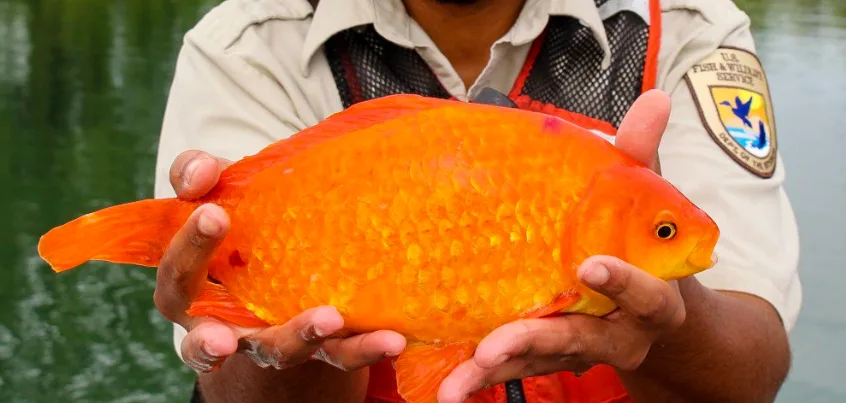
Giant goldfish in Niagara River a reminder not to flush pets
Goldfish do most of their growing in the summer.
Experts say a giant goldfish pulled from the Niagara River earlier this month serves as a reminder to properly dispose of unwanted pets.
The fish is 35-centimetres long, according to Buffalo Niagara's Waterkeeper.
"This is why you should never flush your fish!" The organization says in a Twitter post.
"This 14-inch goldfish was caught in the Niagara River, just downstream of the wastewater treatment plant. If you cannot keep your pet, please return it to the store instead of flushing or releasing it."
DON'T FLUSH THE FISH
Officials in both Canada and the U.S. have been warning people not to flush their pet goldfish for years. In many parts of North America, they have no known predators and can quickly overwhelm an ecosystem.
Discarded goldfish have been known to grow to the size of a football or larger. They start out small in a household tank but can balloon in size under the right conditions.
Goldfish do most of their growing -- and cause the most damage -- during the summer months.
According to Ontario's Invading Awareness Program, the fish stir up mud and debris when they feed, resulting in cloudiness that can have a negative impact on aquatic plants.
Flushing dead fish can introduce parasites or diseases into an ecosystem, especially in areas where water treatment systems are lacking.
VIDEO: GIANT GOLDFISH CLOGGING CANADA'S WATERWAYS | JUNE 2015
HOW TO PROPERLY DISPOSE OF GOLDFISH
If your goldfish is dead:
First, make sure the fish is actually dead. You can do this by:
Checking the gill covers for movement, which indicates breathing.
Checking the eyes. If they are grey and sunken in, the fish is likely dead.
Gently nudge the fish to see if it moves.
If your fish is dead, there are a few ways to get rid of it. Experts recommend burying the fish deep enough that raccoons, dogs or cats can't access it. Cremation is another option, provided there are no fire bans or restrictions in place in your jurisdiction. You can also place the fish in an air-tight package and place in the trash, but you'll have to be aware of raccoons.
If your goldfish is alive:
Getting rid of a live goldfish is trickier. Here are some recommendations:
Try contacting a local pet shop. Some will take in your unwanted fish.
Find a pet owner who is looking to add to their aquarium.
Dentist offices, doctor's offices, retirement homes or classrooms are another option.
Some communities have fish clubs that may adopt your fish.
Sources: Twitter | U.S. Fish and Wildlife Service | Ontario's Invading Species Program






